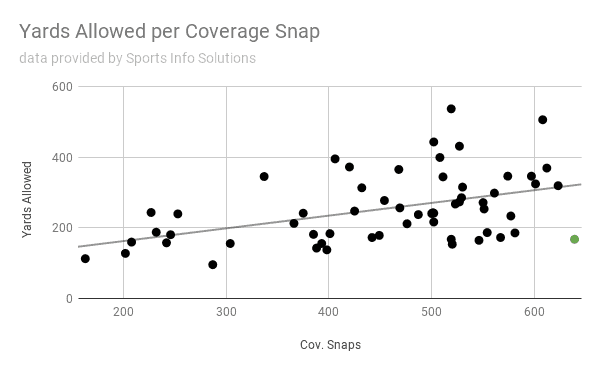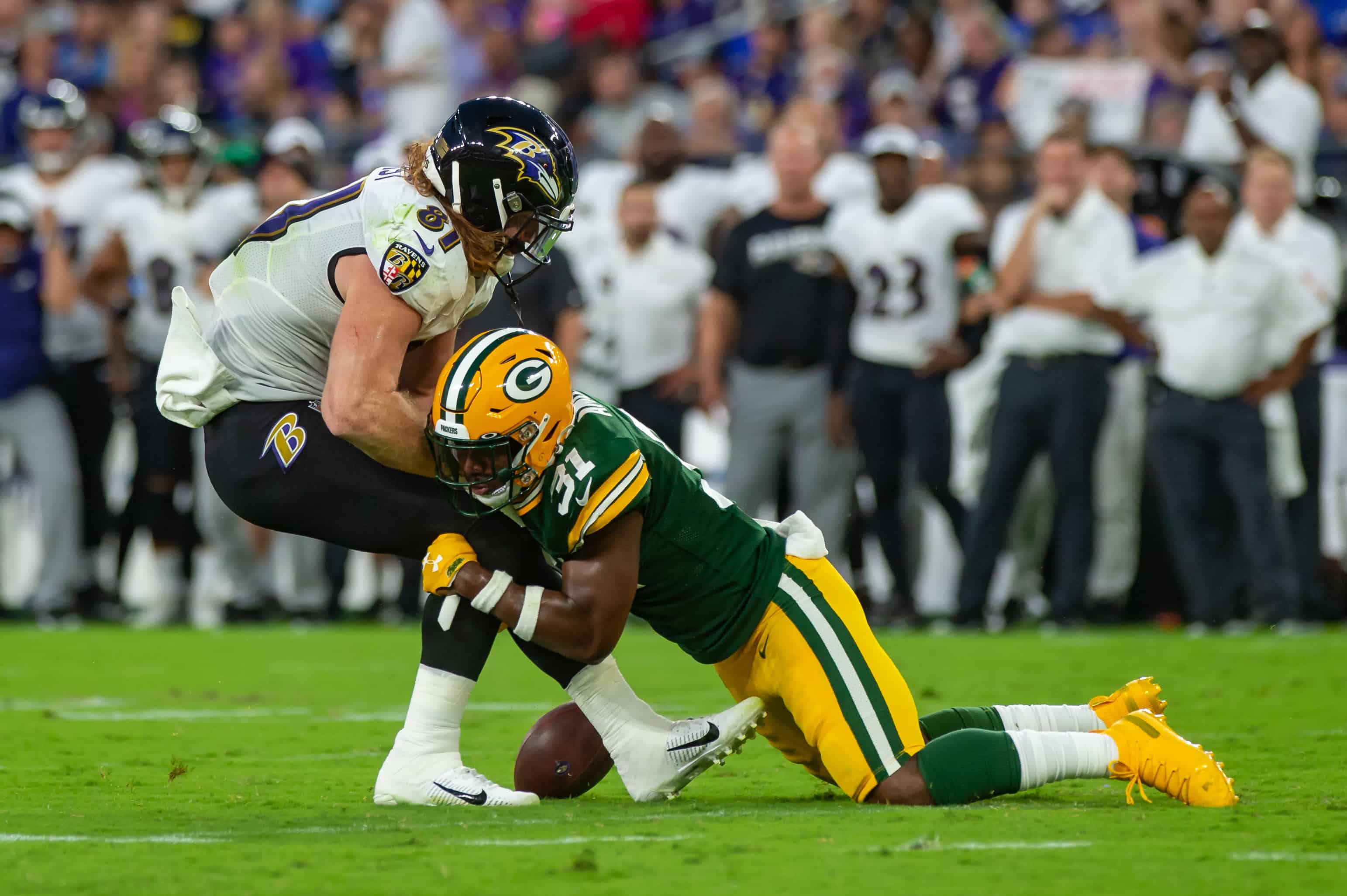Thousands of individual player transactions happened over the weekend as teams got set for their initial 53-man rosters. Player movement has increased lately (thanks in small part to the Houston Texans) and the big moves have dominated the discussion all offseason. But sometimes it’s the under the radar moves that can make the biggest impact.
With that in mind, let’s take a look at some of the sneaky good moves you may have forgotten throughout the course of the long offseason that have the potential to make a major impact in 2019.
Adrian Amos, S, Green Bay Packers
Amos might have been the best value signing of the offseason. A year after the safety market was virtually non-existent, the position got paid in 2019. Earl Thomas, Landon Collins, and Tyrann Mathieu all got massive contracts, but even someone like Lamarcus Joyner got paid. Joyner, who will be entering his age-29 season, got four years and $21.3 million guaranteed from the Oakland Raiders. Meanwhile Amos, 26, only got $12 million guaranteed from the Packers over four years with a much lower average annual value.
Over the past four seasons, the former fifth-round pick has developed into one of the league’s better safeties and last season was statistically one of the best at the position. Per Sports Info Solutions charting, there were 59 safeties who saw at least 20 targets in coverage last season. Amos led those players in yards allowed per coverage snap with the most coverage snaps played in the league.

With the Chicago Bears, Amos did get to play next to Eddie Jackson, who led the league in Adjusted Yards allowed per coverage snaps (which weights for touchdowns and interceptions), but that shouldn’t take away from what Amos was able to accomplish on his own. The Penn State product has shown off his versatility and will serve as the leader of a young Green Bay secondary that features 2017 second-round pick Kevin King, 2018 first-round pick Jaire Alexander, and 2019 first-round pick Darnell Savage.
Jared Cook, TE, New Orleans Saints
There might not be a better passer on the seam route than Drew Brees. The problem is he hasn’t had anyone to consistently throw it to over the past few seasons. No tight end finished with more Expected Points Added on the seam route than Cook in 2018. Cook finished 12th overall in EPA among tight ends on a disaster of an Oakland Raiders offense.
With Cook on the roster, Brees has his first legitimate tight end target since possibly Jimmy Graham, who was still more of a wide receiver. Last year, New Orleans’s tight ends consisted of a 39-year-old Ben Watson, who had the third-most targets on the team with 46, Josh Hill, and Dan Arnold.
The combination of Cook and Brees is the perfect mesh point in skillset and will give the Saints a reliable third option behind Michael Thomas and Alvin Kamara. Cook’s presence in the middle of the field can also open up the outside for deep threats like Ted Ginn and Tre’Quan Smith. In the past, the Saints have been able to get use out of the tight end position in the middle of the field without really having something worth using often at the position. Cook immediately gives the Saints, already one of the best offenses in the league, an additional layer to that offense.
Michael Bennett, DL, New England Patriots
“Michael Bennett was traded for a fifth-round pick” was a common refrain in awe any time Bennett made a play for the Philadelphia Eagles last season. The phrase and bewilderment don’t have to go anywhere in 2019 because Bennett was again traded for a fifth-round pick in the offseason, this time to the Patriots.
At 33 years old, Bennett had one of his best seasons with the Eagles in 2018. Bennett finished the season 23rd in overall pass pressures, despite being on the field for just 69 percent of the defensive snaps for the Eagles. Bennett also had nine sacks and tied a career-high with 30 quarterback hits, which was the fourth-most in the league behind only Aaron Donald, Fletcher Cox, and Yannick Ngakoue.
Bennett still has the quickness to get into the backfield off the edge.
Still, his greatest asset has always been his versatility. Bennett has been able to kick inside and power through the interior to open up more pass rush opportunities for others on the outside. Now he’ll be the main pass rusher on a New England line under the mind of Bill Belichick, who could deploy Bennett all over the line and make the veteran even more dangerous than he was last season.
Matt Paradis, OC, Carolina Panthers
It’s hard for an offensive lineman to be an under the radar signing, especially when it’s for one of the best at a given position. But it also can be easy to overlook how important a signing like Paradis is to the Carolina Panthers.
Last season, only two teams ran the ball between the guards at a higher rate than the Panthers — the Arizona Cardinals and Baltimore Ravens. But the Panthers were only slightly above average (14th) in Adjusted Line Yards to that part of the line, per Football Outsiders. Paradis only played half the season due to injury, but the Denver Broncos, who also heavily favored the middle of the line, ranked eighth.
Perhaps the most important piece of Paradis’s game is his ability to pass block. Per SIS charting, Paradis was fifth among centers in blown block rate last season and only one of his blown blocks came on a passing snap. That’s important blocking for a quarterback with shoulder and possibly ankle issues and in a division that has the likes of Ndamukong Suh, Grady Jarrett, and Sheldon Rankins lining up on the interior.
Justin Houston, EDGE, Indianapolis Colts
Despite a ton of cap space in the offseason, the Colts didn’t make a lot of splash moves. Devin Funchess was brought in to be the No. 2 receiver and the only other big acquisition was the signing of Justin Houston, a cap casualty from the Kansas City Chiefs, on a two-year/$23 million deal.
Houston has battled some injury issues in the past but is still a highly effective pass rusher when he’s asked to get to the passer. Last season Houston ranked 18th in pressure rate among 97 defenders with at least 300 pass rushes. With Indianapolis, Houston will also likely get to focus more on being a pass rusher and less on coverage, which he did often in Kansas City. Houston rushed on only 80.1 percent of his pass snaps last season, which was the 10th lowest rate among those players with at least 300 pass rushes.
With a focus more on rushing the passer, Houston can add an element desperately needed for the Colts defense — a unit that ranked just 24th in pressure rate in 2018. Houston’s presence can help Jabaal Sheard and Kemoko Turay, as well as rookie pass rusher Ben Banogu. Suddenly, the Colts could have a deep pass rush rotation that can also make life a little easier for a young secondary, which was not the case last season when the Colts ranked 20th against the pass by DVOA, but fourth against the run. Getting to the quarterback on defense will be even more important with questions the Colts now have on the offensive side of the ball.
















